Exotic House Plants
What are exotic house plants? And where do they come from?
Central and South American rain forests are overflowing with colorful and exotic treasures, comfortably coddled by the soothing warmth, high humidity and dappled sunshine of their native habitat.
And Africa abounds with spectacular species that seem custom-tailored for our homes. Madagascar Dragon Tree and Jade Plant are just a couple that thrive beautifully indoors.
Head down under and you'll find brightly colored Croton in Northern Australia, as well as Malaysia and the Pacific Islands.
Whew! Does it feel like we're on a world tour? Come along...let's take a closer look...
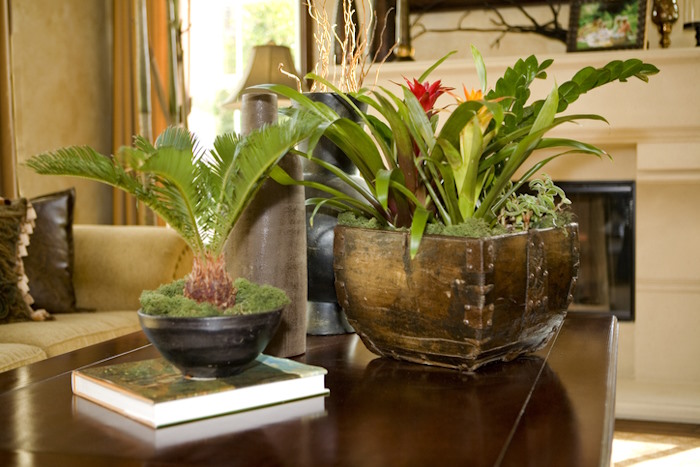 Photo © RASimon
Photo © RASimonThe three plants above show the diversity of exotic house plants.
Despite its name, Sago Palm isn't really a palm but a cycad, a primitive plant originally from Japan.
You'll find Bromeliads nestled in the tall trees of the Central and South American rain forests.
And ZZ Plant is an East African native. It's essentially effortless and provides a dramatic upright form among a group of plants. I highly recommend adding it to your collection.
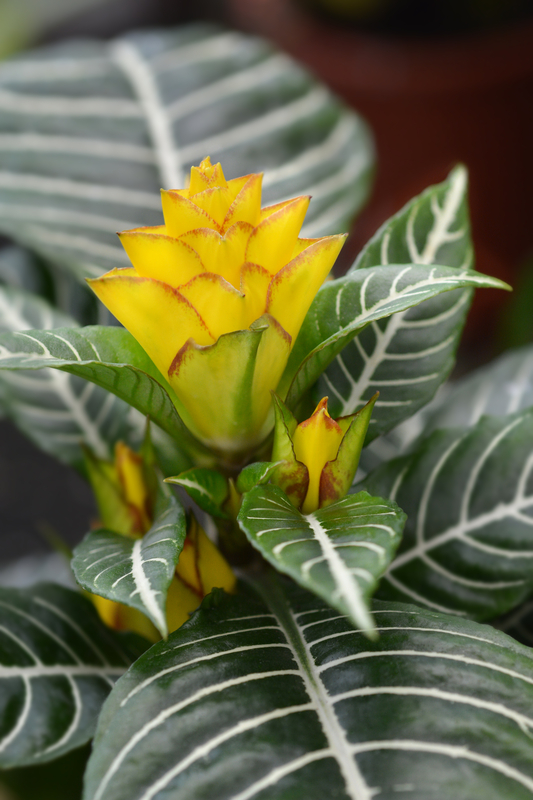 Photo credit: © Iva Villi
Photo credit: © Iva VilliA Spectacular Show
Like drama? Zebra Plant has outrageously bold striped foliage and, for 6 weeks in autumn, vibrant yellow flowers emerge from golden bracts for a scene-stealing performance.
In the wild it thrives in the regular downpours of the Brazilian rain forest. It will also do well indoors if the humidity is high.
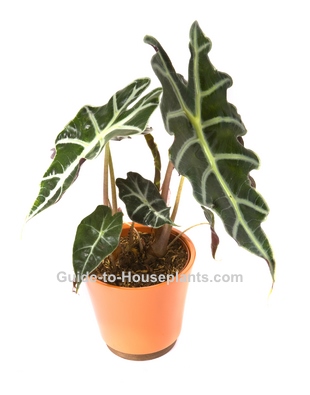
The Wild One
A native of tropical Asia, Elephant's Ear has daringly bold foliage that commands attention in any group of exotic house plants.
Its silvery-green, deeply scalloped leaves are exquisite, dramatically patterned with white veins.
It can be challenging, prefering the high humidity of its natural habitat to the dry air of many homes. However, there are some easy ways to add humidity for your house plants.
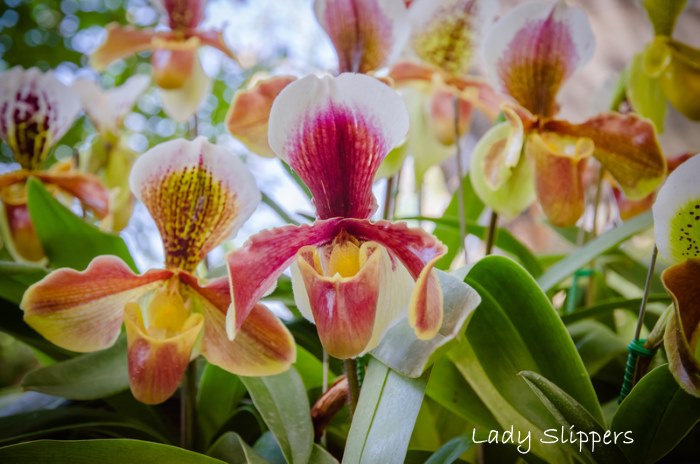 Photo © Khwanchais
Photo © KhwanchaisWorld-Class Beauty
I just can't get enough of orchids, and Lady's Slipper Orchid is no exception.
A ground-dweller from Southeast Asia, its blossoms range from soft pinks to daring color combinations.
This is the only terrestrial orchid that is easy to please indoors, providing you give it the high humidity it craves.
Give Lady Slippers what they want and you'll enjoy those dramatically different slipper-shaped blooms for weeks. Are you brave enough to try one?
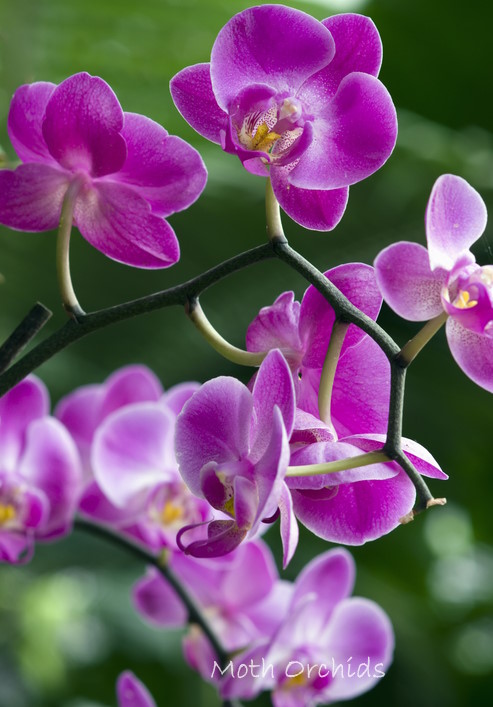 Photo © zepperwing
Photo © zepperwingTree Huggers
Moth orchids are epiphytes (plants that grow on other plants). In the wild, they grab onto tree limbs with their small roots.
Moth Orchids are so well-adapted to their aerial lifestyle that when you plant them in a pot, their thick roots often climb out of the potting mix. Perhaps they're searching for a nearby tree branch.
Provide a bright spot for one and you'll enjoy a succession of gorgeous blooms. Countless hybrids offer a huge range of colors that may be bi-colored, striped or spotted.
Although orchids seem more exotic and mysterious than other flowering house plants, this one is just as easy to grow and is often called the beginner's orchid.
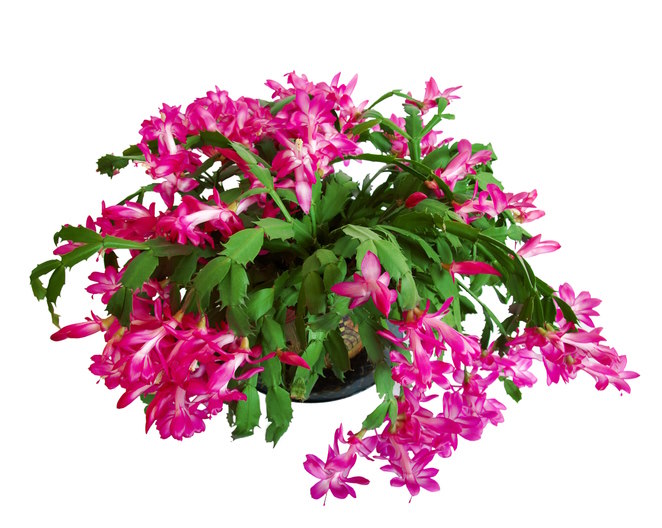 This holiday cactus is growing in popularity. It's easy to see why. Photo istockphoto
This holiday cactus is growing in popularity. It's easy to see why. Photo istockphotoJungle Love
Crab Cactus comes from the tropical forest in Brazil where it makes its home on trees.
It gets its name from the deeply indented stems that look like crab claws. Bearing big, beautiful flowers in the fall, it's also called Thanksgiving Cactus.
Crab Cactus (Schlumbergera truncata) is the parent of many hybrid Schlumbergeras. I think it is the most captivating.
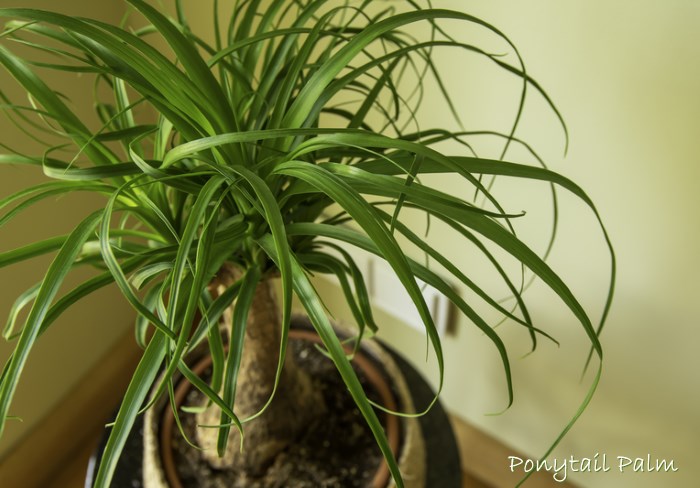 Photo © Renataka600
Photo © Renataka600Are you game?
Rule the plant kingdom with Elephant Foot plant. Its woody bulbous "foot" stores water so this desert native can go for weeks without watering. It's also called Ponytail Palm for the curvy straps of leaves that sprout from the top.
Grow this Mexican succulent in bright light and you'll find it adapts easily to the indoors. It even thrives in dry air. This is one tough plant. The odd shape with the palm-like leaves give it a commanding presence in any room.
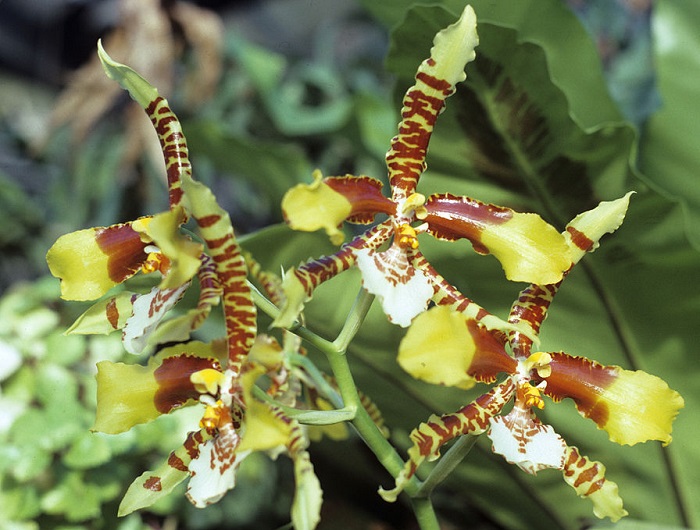
Tiger Tamer
Why not go wild with orchids? Animal patterns, colors and textures are anything but tame.
Dramatic yellow blooms with reddish-brown stripes lend Tiger Orchids their ferocious name. Although fiercely demanding of humidity, these rain forest natives are easier to please indoors than you may think. Keep this orchid happy, and you'll enjoy pedestal-worthy tropical flowers a long time.
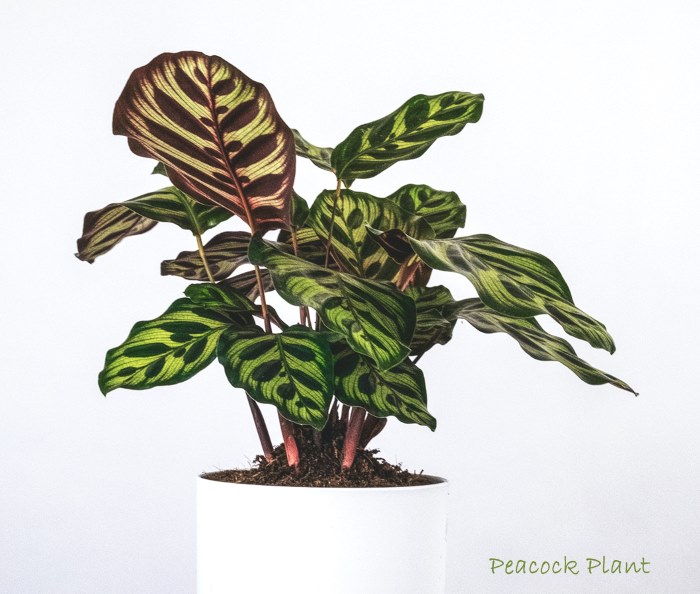
Proud as a Peacock
Exquisitely patterned leaves make the Peacock Plant one of the most striking foliage plants you'll find anywhere. It struts its stuff, unfurling leaves in shades of green and brown. Well, you can see how it earned its name. Put it on a tall table or pedestal -- this is one you'll be proud to show off.
This Brazilian native is not the easiest to please, preferring constant warmth and high humidity like its natural rainforest habitat. Give this exotic house plant what it wants and you'll count it as one of your favorite house plants.
There are even more exotic house plants to explore! Take a look at these exotic flowering plants from Hawaii.


